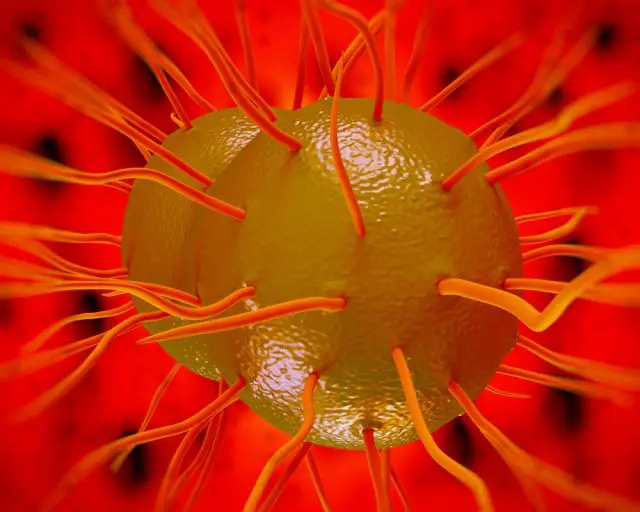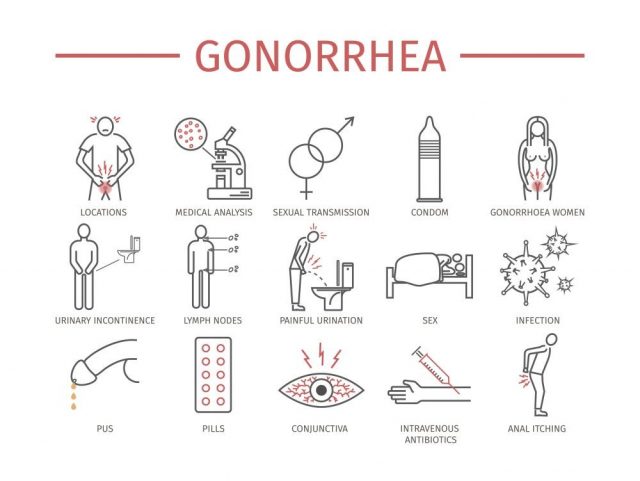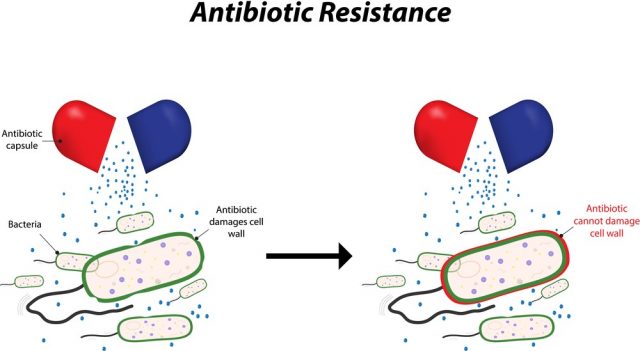Super Gonorrhea
We all know that Gonorrhea is a form of STD that is a sexually transmitted disease that affects both females and males. A person infected with gonorrhea may develop infections in the rectum, throat and genitals. It commonly affects people who are sexually active and aged between 15 to 24 years.
The diseases can pass on from the mother to the child during labor and is generally transmitted through vaginal and anal oral sex. A person affected with gonorrhea gets painful urination, unusual discharge and sometimes even bleeding.
Up till now it was usually treated with antibiotics but recently, in the last few decades, due to genetic mutations in bacteria, many antibiotics are rendered ineffective. The bacteria causing gonorrhea are becoming antibiotic resistant and the list of ineffective antibiotics is on the rise.
The antibiotic resistant bacteria called the Neisseria gonorrhea which causes gonorrhea has been termed as ‘Super Gonorrhea’ by the scientists. Let us read briefly about the evolving of the super gonorrhea bacterium:
History
- Sulfa drugs were found to be an effective cure for super gonorrhea way back in the 1940s, but the bacteria adapted itself to its surroundings and the sulfa drugs stopped working.
- Next penicillin was administered by doctors for treating super gonorrhea. But the bacteria mutated themselves in a strain which could break down penicillin too. This led the scientists to believe that this bacterium would continuously evolve into different and resistant strains.
- By 1983, the scientists and doctors isolated resistant strains of bacteria not only to penicillin but also to some other heavy duty antibiotics like the tetracycline, fluoroquinolones and spectinomycin.
- By 2002, there was only a single class of antibiotics called the cephalosporins which could effectively cure the infection. Cephalosporins could be taken orally or via injections.
- By 2007, oral medication also became inefficient and failed to cure super gonorrhea.
- Later, in 2010, the Centers for Disease Control (CDC) suggested the use of ceftriaxone which was a capable cephalosporin via an injection along with orally administered azithromycin. According to them, this was the only possible treatment against the resistive strains of gonorrhea or the super gonorrhea.
This cure for super gonorrhea is mentioned in the STD guidelines as the only effective cure for super gonorrhea; injectable ceftriaxone with an oral dose of azithromycin. The combination of both the drugs addresses the N.Gonnorhoeae bacterium which develops resistant against any cephalosporin.
The figure below demonstrates how antibiotic resistance develops in the bacteria:
Diagnosis
There are two types of tests to diagnose gonorrhea:
- Simple DNA test: this test is simply taken by doctors as it is very convenient and many laboratories lack the particular technology which is necessary for testing the susceptibility of the antibiotics. Due to this, one cannot monitor the resistance of the ever-evolving gonorrhea bacteria. This method is also known as the Nucleic Acid Amplification Test (NAAT). It is cheap and requires less work. The doctors may ask the lab physicians to re-evaluate the patient if the treatment fails. After this fails, they make sure to take the culture and proceed to the susceptibility test.
- Complex antibiotic susceptibility test: This test uses a culture to determine which antibiotics are susceptible to a specific strain of infection. This process, though slow, gives accurate results on which antibiotics a given strain of super gonorrhea is resistant to. In this procedure, one may have to grow the bacterium in the lab and then exposing it to a number of controlled dosages of antibiotics. This procedure gives accuracy and precision.
Risk Factors
The following are the risk factors associated with super gonorrhea:
- One of the greatest problems in treating gonorrhea is that the patient has to see for himself whether any lingering signs of the disease are there or not and go to the doctor again. This disease is asymptomatic and hence many times, on testing, the symptoms do not show in the results and the patient is declared free of the disease. But in fact, these patients may be capable of transmitting the bacteria to their sexual partners. These type of cases have not been shown up in the U.S as yet but they have been known to come up in Japan, Canada and Europe.
- The disease has been termed as a ‘global concern’ by the World Health Organization and the disease super gonorrhea has been nicknamed as the ‘super bug’ by doctors and scientists.
- The dosages of ceftriaxone when prescribed in a fixed limited amount, also developed resistance until 2010 and only after that the doctors increased the dosage to cure the infection.
- This disease is largely prevalent and risked to be transmitted when men have sex with men. Last December, the federal officials found that the disease was found to be higher in men for the first time in 10 years.
- According to some new researches, it was found that the disease was found to be spreading to population of heterosexuals also.
- According to a recent study done by Swedish doctors in 2016, they found that it was very difficult to eradicate the disease resistant strain of the gonorrhea bacteria from throats of 4 heterosexual women and men.
- One is susceptible to a lot many other health problems once the person has contracted gonorrhea. If the disease is left untreated, the complications may lead to infertility and death.
- The super gonorrhea bug is more dangerous and active than a normal gonorrhea infection and it is very difficult to treat it quickly often resulting in serious damage.
- A particular strain of the antimicrobial resistant gonorrhea called the HO41 has been put in the same category as the Methicillin-resistant Staphylococcus aureus (MRSA) and other some dangerous superbugs which are drug resistant too.
- The CDC and some scientists fear the superbug to become more common in the coming years and take the form of a mass epidemic just like AIDS and HIV.
In the news
Super gonorrhea is called ‘super clap’ in slang language and it’s been raising an alarm worldwide due to its antibiotics resistant capabilities. Doctors claim that oral sex is the cause of the spread of this deadly superbug. It is spreading rapidly in the world endangering millions of lives according to a recent warning made by the World Health Organization.
According to scientists, the more the bacteria is left to deal with lower dose antibiotics, the more smarter it becomes in getting resistance against it. Unsafe sex, oral sex and decline in the use of condoms are the factors leading to its spread.
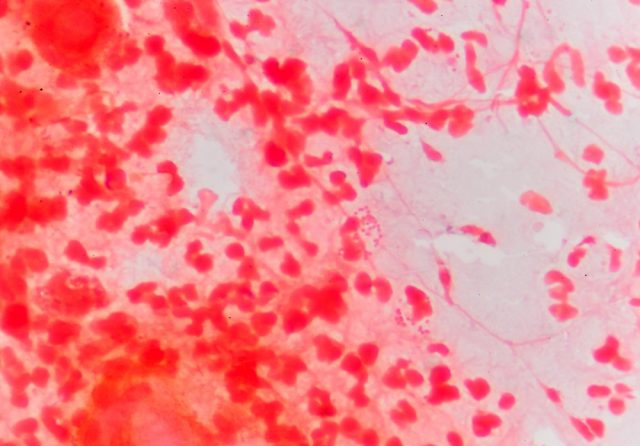
Moderate red white blood cells with gram negative diplococci intracellular Gram-negative coffee bean-shaped diplococci bacteria responsible for the sexually transmitted infection gonorrhea
This bacteria thrives at the back of the throat and from there develops immunity against the antibiotics taken to treat the throat infections. Bacteria evolve new mechanisms of self-defense rendering the drugs ineffective. Antibiotic resistance is mainly caused due to excess quantities of antibiotics. In 2016, the WHO had warned the world that this super bug would get resistant to antibiotics within a few year but now they now fear that the time has come and that the last proven antibiotics to treat gonorrhea have been rendered useless by the bacteria.
Teodora Wi, a specialist of human reproduction from the UN healthy agency of Geneva quoted that Gonorrhoea was a very smart bug. It manages to develop resistance to any antibiotics it is introduced to. Because this bacteria lives at the back of the throat, it develops resistance against the antibiotics used to treat the repeated throat infections.
It is also spread by unprotected anal sex or vaginal sex. Apart from throat, they also reside in the rectum and genitals and can spread through penetrative sex and also by touching by transferring through the sex toys or fingers. Initial symptoms of the disease could be conjunctivitis, abdominal pain and pus leakage from the penis. If left untreated it may lead to HIV, ectopic pregnancies and inflammatory diseases of the pelvis.
People have myths about the use of condoms fearing that condom lead to the spread of HIV and refrain from using condoms leading to the spread of this infection. As this disease is spread through sexual fluids, condoms actually protect the disease from spreading.
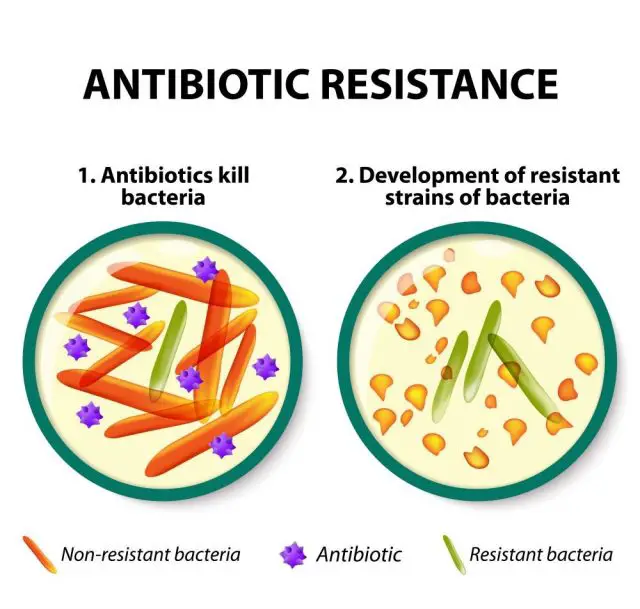
Antibiotic resistance. Diagram showing the difference between non-resistant bacteria and resistant bacteria
Presently, there are three patients one each in Japan, France and Spain with gonorrhea strains against which no antibiotic is effective. Equipment required to diagnose and report this bacteria is very costly and not present in poorer countries where this bacteria is getting increasingly more common.
There is a pressing need for some new medicines which will prove effective against this super bug. It has already shown resistance against ciproflaxin and is now showing resistance to azithromycin too. Most countries only have azithromycin left to treat gonorrhea.
The scientists are working on three hopeful new drugs against gonorrhea and they are the only potential ones in tow. There is no guarantee that they will be effective, but scientists are hopeful and waiting for the final stage trials.
Scientists suggest that the existing drugs need to be used carefully and appropriately as they are the only hope left right now. This will slow down the drug resistance and give time to scientists to come up with something new.


